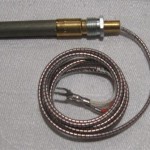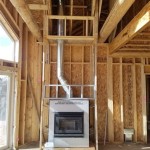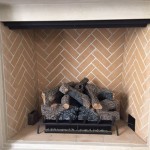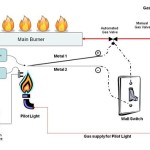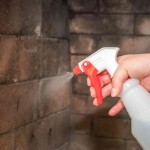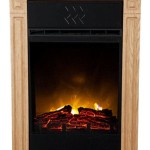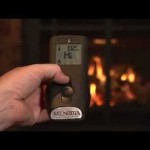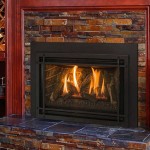Fireplace Fan Screen: Enhancing Safety, Efficiency, and Aesthetics
Fireplaces, whether wood-burning, gas, or electric, present a focal point in many homes, providing warmth, ambiance, and a sense of comfort. A less-discussed but crucial component of fireplace usage is the fireplace fan screen. These screens, combining functionality with design, serve multiple purposes, from safeguarding against hazards to improving heating efficiency and complementing interior decor. This article will explore the benefits, types, selection criteria, and proper maintenance of fireplace fan screens.
Safety First: Preventing Sparks and Embers
The primary function of a fireplace fan screen is to prevent errant sparks and embers from escaping the firebox and entering the living space. A traditional open fireplace poses a significant fire risk, particularly in homes with carpeting, flammable furniture, or small children and pets. Burning wood often produces popping sounds as trapped moisture heats and explodes, sending hot embers flying. These embers can quickly ignite flammable materials, leading to property damage and potential injury.
A properly installed fireplace fan screen acts as a physical barrier, containing these sparks and embers within the fireplace. The tight weave of the mesh prevents even small particles from passing through, minimizing the risk of accidental fires. This is particularly important when the fireplace is left unattended, even for short periods. The peace of mind provided by knowing that the risk of stray embers is significantly reduced makes a fireplace fan screen an essential safety feature.
Beyond preventing immediate fires, a fireplace fan screen also helps to protect against the slow buildup of combustible materials around the fireplace. Over time, escaped ash and soot can accumulate, creating a potential fire hazard. By containing these materials, the screen contributes to a cleaner and safer environment surrounding the fireplace.
Improving Heating Efficiency through Air Circulation
While safety is paramount, fireplace fan screens also contribute to improved heating efficiency. Fireplaces, by their nature, draw air from the room to fuel the fire. This can lead to drafts and localized heating, where the area directly in front of the fireplace is warm, while other parts of the room remain cold. A fireplace fan screen, particularly those equipped with integrated fans, helps to address this issue by promoting air circulation.
The fans, typically small and energy-efficient, draw cool air from the lower part of the room and circulate it around the firebox. This heated air is then pushed back into the room, distributing the warmth more evenly. This process reduces temperature stratification, where warm air rises to the ceiling while the floor remains cold. The result is a more comfortable and efficiently heated living space.
The use of a fireplace fan screen with integrated fans can also reduce the amount of fuel required to maintain a comfortable temperature. By distributing heat more effectively, less wood or gas is needed to achieve the desired level of warmth. This translates to lower heating costs and a reduced environmental impact, particularly for those who rely on wood-burning fireplaces.
Furthermore, some fireplace fan screens are designed with adjustable fan speeds, allowing users to customize the airflow based on the size of the room, the intensity of the fire, and individual comfort preferences. This flexibility enhances the efficiency and effectiveness of the heating system.
Aesthetic Enhancement: Complementing Your Decor
Beyond their practical benefits, fireplace fan screens also serve as decorative elements, enhancing the aesthetic appeal of the fireplace and complementing the overall interior decor. Available in a wide range of styles, materials, and finishes, these screens can be chosen to match the existing design scheme or to create a focal point in the room.
Traditional fireplace fan screens often feature ornate designs with intricate metalwork, such as scrollwork, floral patterns, or geometric shapes. These screens evoke a sense of classic elegance and can be particularly well-suited for homes with traditional or Victorian-style decor. Modern fireplace fan screens, on the other hand, tend to be more minimalist in design, with clean lines, simple shapes, and a focus on functionality. These screens are often made from materials such as stainless steel or black metal, and they can complement contemporary or industrial-style interiors.
The finish of the fireplace fan screen can also play a significant role in its aesthetic impact. Options range from classic black or brass finishes to more modern choices such as brushed nickel or oil-rubbed bronze. The finish should be selected to coordinate with other metal accents in the room, such as door hardware, lighting fixtures, or furniture frames.
Furthermore, some fireplace fan screens are designed with customizable features, such as interchangeable panels or decorative accents. This allows homeowners to personalize the screen to match their individual tastes and preferences. The ability to tailor the appearance of the screen ensures that it seamlessly integrates into the overall design of the room.
Selecting the Right Fireplace Fan Screen: Key Considerations
Choosing the appropriate fireplace fan screen involves careful consideration of several factors, ensuring both functionality and aesthetic compatibility. These factors include size, material, style, fan features (if applicable), and safety certifications.
Size: The size of the fireplace fan screen is crucial for ensuring proper coverage and preventing sparks from escaping. The screen should be wide enough to completely cover the fireplace opening, with a slight overlap on each side. The height of the screen should also be sufficient to protect against embers that may be propelled upward. Accurate measurements of the fireplace opening are essential before selecting a screen.
Material: The material of the fireplace fan screen affects its durability, heat resistance, and aesthetic appeal. Common materials include steel, iron, and brass. Steel screens are generally the most durable and affordable, while iron screens offer a more traditional look. Brass screens are often chosen for their decorative appeal, but they may require more maintenance to prevent tarnishing. The mesh of the screen should be made from a tightly woven material that can effectively contain sparks and embers. Galvanized steel mesh is a good option for its rust resistance and durability.
Style: The style of the fireplace fan screen should complement the overall decor of the room. Consider the existing design scheme and choose a screen that matches the aesthetic. Traditional homes may benefit from ornate screens with intricate metalwork, while modern homes may be better suited for minimalist screens with clean lines.
Fan Features (if applicable): If considering a fireplace fan screen with integrated fans, evaluate the fan features carefully. Look for energy-efficient fans with adjustable speed settings. The fans should be quiet in operation to avoid disrupting the ambiance of the room. The power cord should be long enough to reach a nearby outlet without requiring an extension cord. Consider the placement of the fans within the screen and ensure that they effectively circulate air around the firebox.
Safety Certifications: Look for fireplace fan screens that meet relevant safety certifications, such as those from the Consumer Product Safety Commission (CPSC). These certifications indicate that the screen has been tested and meets specific safety standards. Check for features such as sturdy construction, stable legs, and secure mesh attachment.
Maintenance and Care for Longevity
Proper maintenance and care are essential for extending the lifespan of a fireplace fan screen and ensuring its continued effectiveness. Regular cleaning, inspection, and occasional repairs can help to keep the screen in good condition.
Cleaning: Fireplace fan screens should be cleaned regularly to remove accumulated ash, soot, and dust. Use a soft brush or vacuum cleaner with a brush attachment to remove loose debris. For more stubborn stains, a mild soap and water solution can be used. Avoid using abrasive cleaners or harsh chemicals, as these can damage the finish of the screen. Ensure that the screen is completely dry before placing it back in front of the fireplace.
Inspection: Periodically inspect the fireplace fan screen for signs of damage, such as rust, cracks, or loose mesh. Repair any damage promptly to prevent it from worsening. Small rust spots can be treated with a rust inhibitor and repainted. Loose mesh can be reattached using wire or metal fasteners.
Fan Maintenance (if applicable): Fireplace fan screens with integrated fans require occasional maintenance to ensure proper operation. Clean the fan blades regularly to remove dust and debris. Lubricate the fan motor as needed, following the manufacturer's instructions. Check the power cord for damage and replace it if necessary.
Storage: When the fireplace is not in use, consider storing the screen in a dry place to protect it from rust and corrosion. Cover the screen with a cloth or plastic sheet to prevent dust accumulation.
By following these maintenance and care guidelines, homeowners can ensure that their fireplace fan screens remain in good condition for many years, providing both safety and aesthetic benefits.

Uniflame Polished Brass S Ornate Medium Fan Screen

Old Peacock Fan Style Fireplace Screen At 1stdibs Fire Decorative Brass

Vintage Brass Peacock Fireplace Screen

Peacock Fan Brass Vintage Folding Fireplace Screen

1940s Brass Peacock Folding Fan Fireplace Screen Chairish

Vintage Brass Fireplace Screen Fan Gargoyle Peacock Griffin Inventifdesigns

Vintage Brass Folding Fan Fireplace Screen Figural Cameo Lady Denmark

Vintage Brass Folding Fireplace Screen Griffin Phoenix Peacock Fan Ornate

Peacock Fan Fire Screen Furniture La Maison Chic Luxury Interiors

Vintage Brass Fireplace Screen Fan Peacock Victorian Art Nouveau Holly Inventifdesigns
Related Posts

